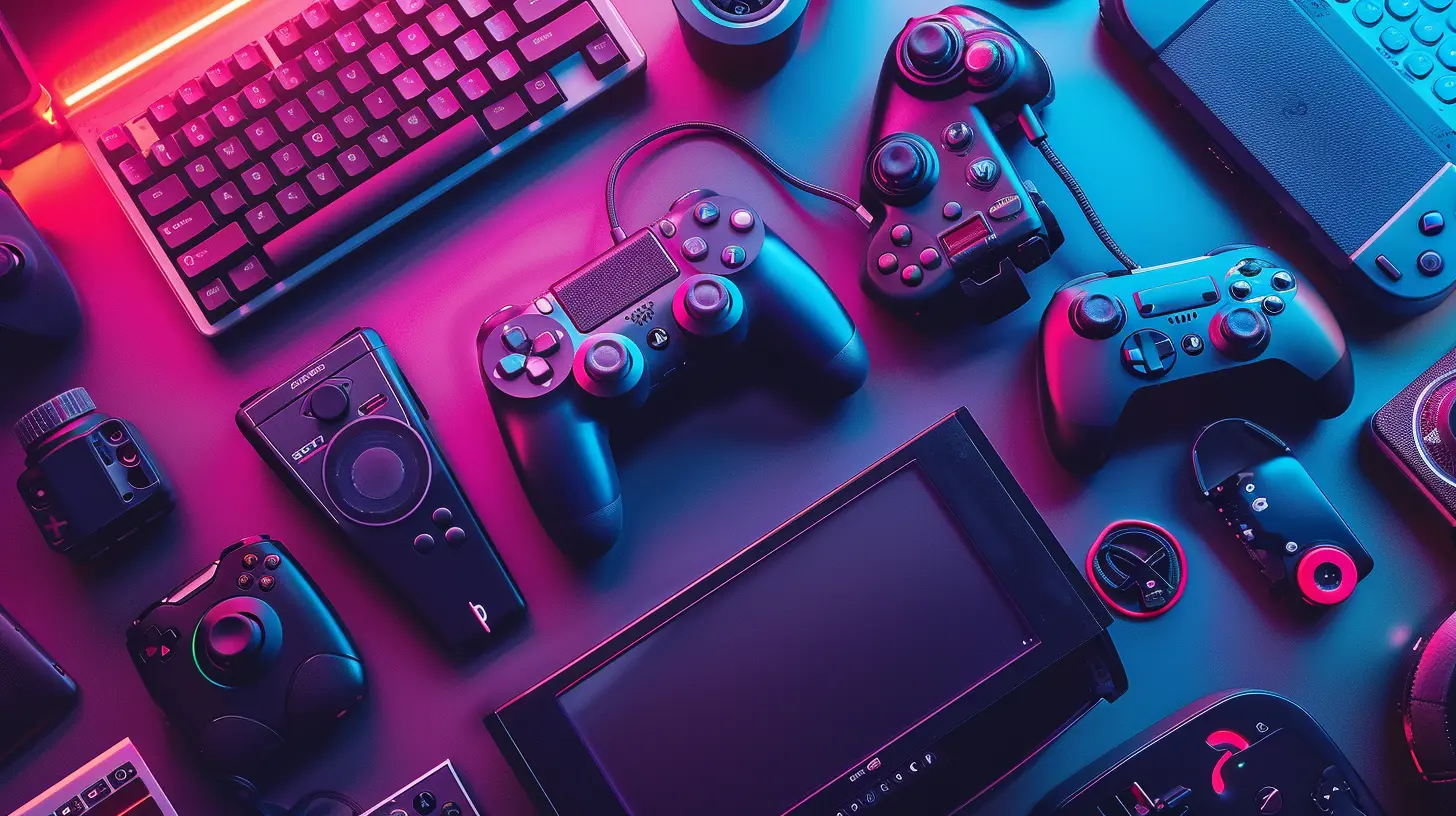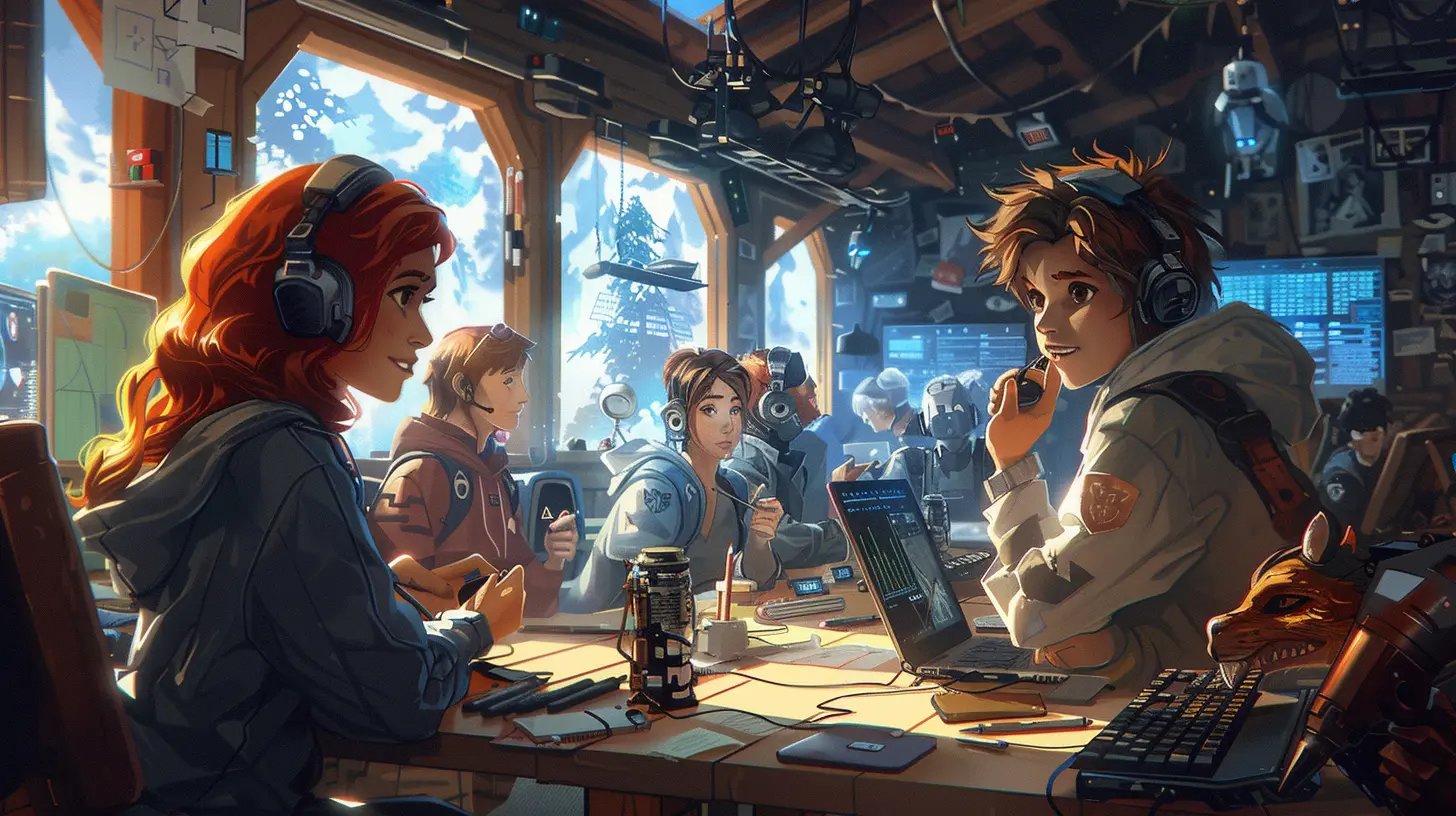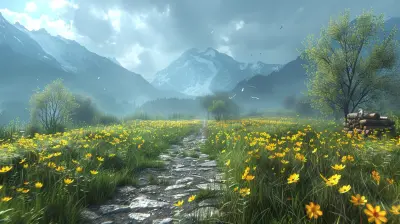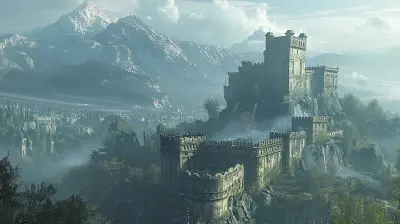Collaborative Game Development: Tools and Techniques for Remote Teams
6 October 2025
Game development has always been a team sport. From conceptualizing groundbreaking game mechanics to delivering stunning visuals and captivating storylines, the process is as collaborative as it gets. But throw remote work into the mix, and things get a bit trickier, right? Keeping everyone on the same page across different time zones, juggling numerous tools, and maintaining creativity can feel like herding cats. Don’t worry, though—this isn't uncharted territory! Remote game development is not only possible; it's thriving thanks to some game-changing tools and techniques.
If you're curious about how remote teams nail it in game development, sit back, grab a coffee (or a health potion), and let’s dive into the world of collaborative game development and the strategies that keep virtual teams humming like a well-tuned engine.
Why Remote Collaboration Is the New Norm in Game Development
Let’s be real—remote work has become second nature for most industries, and the gaming world is no exception. The global pandemic may have accelerated the trend, but even before that, remote game development was gaining traction. Why? Because talent knows no borders. Studios want to hire the best artist in Berlin or the most innovative programmer in Tokyo without needing them to relocate.Remote collaboration also means smaller studios, indie developers, and massive gaming powerhouses alike can cut costs on office space and invest that money elsewhere (because hey, game engines and hardware aren't cheap!). But with these benefits come challenges—keeping everyone connected, managing workflows, and, most importantly, fostering creativity when you're all staring at screens from miles apart.
Essential Tools for Collaborative Game Development
Just like you wouldn’t venture into a dungeon without your trusty sword and shield, remote teams need tools to thrive. Let’s break this down by categories that matter the most in game development.1. Project Management Tools
When you’ve got artists, coders, writers, and designers working together (often on tight deadlines), organization is your best friend.- Trello: Think of Trello as a digital whiteboard with sticky notes. Each card represents a task or idea, and every team member knows what’s in the pipeline. It’s simple, but incredibly effective.
- Jira: For teams working on complex projects that involve tons of coding, Jira is like an RPG skill tree—everything’s mapped out, from bugs that need squashing to new features in development.
- Asana: A visually appealing tool, Asana is great for breaking down big projects into manageable chunks. Plus, you get fun little animations when you finish tasks. Who doesn’t want a flying unicorn for completing a sprint?
2. Real-Time Communication Tools
Communication is the lifeblood of any team, especially when you’re not in the same room. Emails? Too slow. Smoke signals? Not practical. Enter real-time tools:- Slack: Slack is the hub for team conversations. Create channels for art, development, QA, or even fun ones like #meme-chat to keep morale high.
- Discord: Originally designed for gamers, Discord is like Slack’s cool, laid-back cousin. Its voice and video call features make it perfect for quick brainstorming sessions or playtesting discussions.
- Zoom/Google Meet: When face-to-face (well, screen-to-screen) communication matters, these video conferencing tools are the go-to. Bonus points for the ability to share screens—great for reviewing game builds in progress.
3. Version Control and Collaboration Platforms
Imagine losing weeks of work because someone overwrote the master game file. Terrifying, isn’t it? That’s where version control steps in, saving your sanity.- GitHub: A lifeline for developers. GitHub allows teams to work on the same codebase and merge changes seamlessly.
- Perforce: Many AAA studios swear by Perforce for managing game assets, from art files to code scripts. It’s built for handling the massive amounts of data typical in game development.
- Unity Collaborate: If your team’s using Unity, Collaborate is a built-in option that lets everyone share and sync their work in one place.
4. Creative Collaboration Tools
Let’s not forget the creative side of game development. Art, audio, writing—these need collaboration too.- Figma: Perfect for UI/UX design. Teams can create and edit interfaces in real-time without email ping-pong.
- Adobe Creative Cloud: With tools like Photoshop and After Effects, Adobe is the Swiss Army knife for game art and animation. The shared libraries make collaboration less of a headache.
- Google Workspace: Docs, Sheets, Slides—Google has your back for scriptwriting, budgeting, or pitch decks. Multiple people editing a document simultaneously? Chef’s kiss.
Techniques That Make Remote Game Development Work
Tools are great, but they won’t magically solve all your problems. You need effective techniques to make collaboration smooth, efficient, and maybe even fun. Here are some game-changers (pun intended) for remote game development:1. Daily Stand-Ups
Whether you call them stand-ups, check-ins, or team syncs, a short daily meeting goes a long way. Just 15 minutes to update everyone on what you’re doing, any blockers you’re facing, and what's next. It’s like keeping your party informed before an epic quest.2. Overcommunication
Wait, what? Isn’t overcommunicating a bad thing? Not in remote work. When you’re not sitting next to someone, assumptions can derail projects. Spell things out, clarify tasks, and don’t be shy about asking questions. Think of communication like health potions: you're better off with too many than too few.3. Clearly Defined Roles
In a remote setting, blurred lines can lead to confusion. Define who’s doing what. If Alex is the environment artist, don’t ask them to also QA a buggy level. Let people own their roles—it empowers them and reduces overlap.4. Async Workflows
Not everyone’s on the same timeline. While someone in New York is grabbing breakfast, their colleague in Sydney might be calling it a day. Make workflows asynchronous so everyone can contribute without feeling pressure to be online at odd hours.5. Regular Playtests
Playtesting isn’t just about finding bugs or balancing mechanics; it’s a chance for the whole team to see the game evolve. Whether it’s once a sprint or bi-weekly, schedule playtesting sessions where everyone can provide feedback. It’s like a pep rally for progress.
Challenges of Remote Game Development (And How to Overcome Them)
Sure, remote game development sounds great, but let’s not sugarcoat it—there are hurdles. Here are some common challenges and how to tackle them like the final boss.1. Lack of Personal Connection
When you’re not chatting by the watercooler or going out for post-work drinks, it’s easy to feel disconnected. Combat this with virtual team-building activities. Join a gaming session (obviously) or host a movie night. It’s not the same, but it helps bridge the gap.2. Creative Stagnation
It's harder to brainstorm when you're not in the same room scribbling on a whiteboard. Use tools like Miro, a virtual whiteboard, to simulate that in-office energy. Don’t forget to set aside time for casual chats where ideas can flow freely.3. Time Zone Troubles
This one’s tough to avoid in global teams, but staggered schedules and async workflows can help. Also, use shared calendars to map out everyone’s time zones—it’s a small thing, but it makes scheduling so much easier.4. Burnout
Working from home can feel like living at work if you're not careful. Encourage your team to take breaks, log off at reasonable hours, and have boundaries. After all, even the best heroes need rest between battles.The Future of Remote Game Development
If there’s one thing we’ve learned, it’s that remote game development isn’t going anywhere. As tools get better and teams refine their workflows, the sky’s the limit. Whether you're an indie team creating the next pixel-art masterpiece or a AAA studio crafting an open-world epic, collaborating remotely is now a core part of the gaming industry's DNA.And who knows? With advancements in AR and VR, we might soon see virtual offices that feel as immersive as the worlds we’re building for players. The future’s bright—just don’t forget to keep leveling up your remote collaboration game.
all images in this post were generated using AI tools
Category:
Game DevelopmentAuthor:

Avril McDowney
Discussion
rate this article
1 comments
Bridget Jordan
What a fantastic overview! Collaborative game development has never been more accessible. Excited to see how these tools shape the future of remote teamwork in the gaming industry. Keep it up!
October 8, 2025 at 3:28 AM

Avril McDowney
Thank you for your kind words! I'm excited too about the potential of these tools in shaping the future of remote game development.


